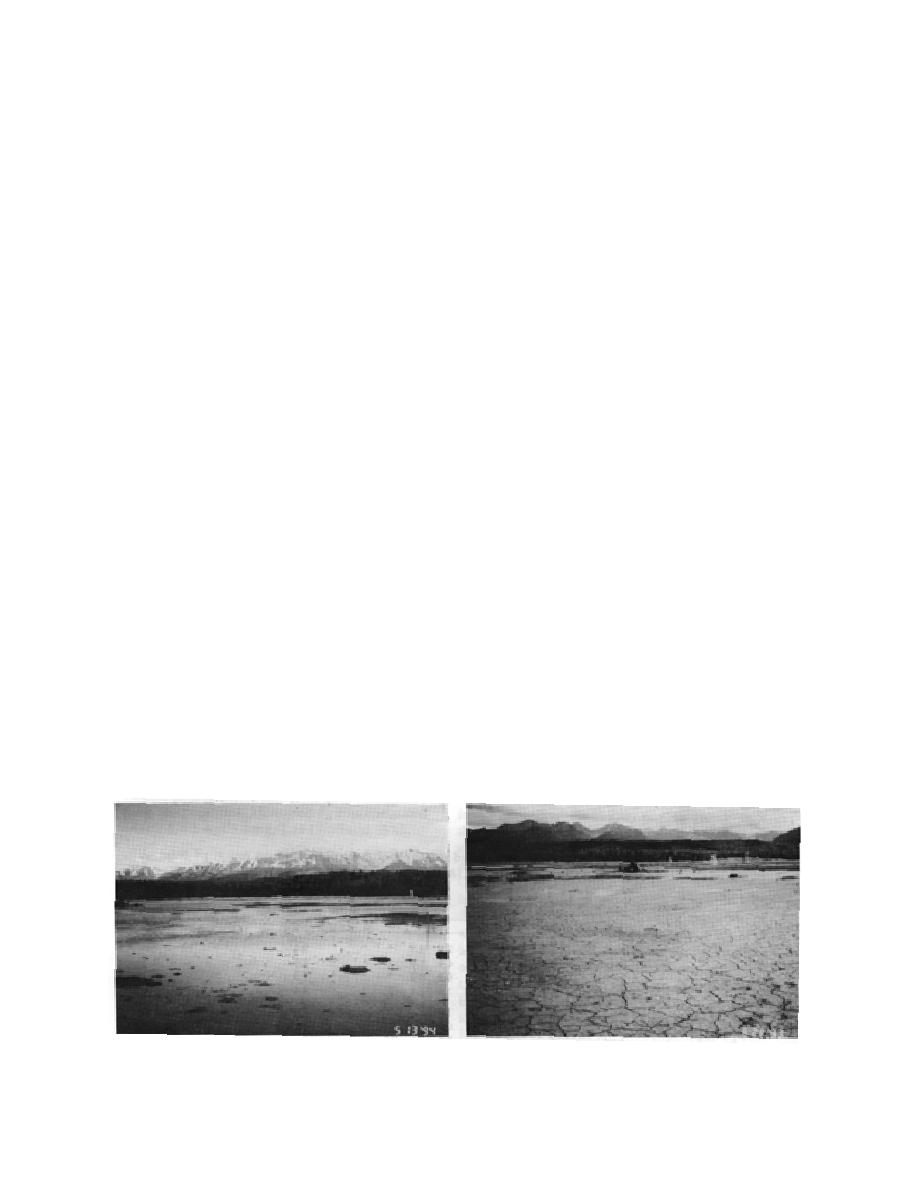
varied between 18 and 24C. Given that the vapor
solution). Solid P4 introduced into anoxic, saline
pressure would vary between 0.025 and 0.041 torr
aquatic environments is likely to persist indefi-
over this temperature range, temperature effects
nitely.
could dominate the effects of soil type, moisture
or time. In any case, the important observation is
NATURAL SIZE REDUCTION OF
that there is experimental evidence for P4 subli-
WHITE PHOSPHORUS PARTICLES
mation and escape from unsaturated soils.
IN EAGLE RIVER FLATS SEDIMENTS
Henry's constant
Background
The Henry's Law constant is the ratio, at equi-
Since 1990, when we identified white phos-
librium, of the concentration (partial pressure) of
phorus as the cause of waterfowl deaths at Eagle
an analyte in the vapor phase to the concentra-
River Flats (Racine et al. 1992a,b,c), methods
tion (mole/L) in aqueous solution. It may be
have been discussed for decontaminating the
used to assess losses due to the transfer of P4
sediments. Remedial techniques currently under
from water to the atmosphere. Spanggord et al.
investigation at Eagle River Flats (ERF) include
(1985) measured the Henry's Law constant for P4
dredging, covering and pond draining. To pre-
as 2.1 103 atm-m3/mole, so the mass transfer of
serve as much habitat as possible and make the
P4 from water to the atmosphere could be signif-
remedial process cost efficient, these techniques
icant. Spanggord et al. (1985) estimated the vola-
will most likely be used only in those areas
tilization half-life of dissolved P4 in a turbulent
where white phosphorus is persistent and will
stream to be 0.8 hours, which is faster than the
continue to threaten waterfowl.
While white phosphorus is extremely toxic
oxidation half-life. This estimate is consistent
(Clarkson 1991), it has the potential to form non-
with the results of Xulong et al. (1987), who
toxic phosphates. In the anoxic, saline sediments
found that agitation was the most significant fac-
of permanently ponded areas of ERF, phosphate
tor contributing to the loss of P4 in a treatment
formation from solid, millimeter-size white
process for P4-contaminated water.
phosphorus particles (Fig. 1) will be extremely
slow. However, not all ponded areas of ERF are
Summary
White phosphorus (P4) is thermodynamically
permanently covered with water. During some
unstable in the presence of oxygen. In nature,
summers with extended periods between flood-
phosphorus is found in oxidation state +5 as or-
ing high tides, the size of some ponds may be re-
thophosphate ( PO 43 ). When white phosphorus
duced significantly (Fig. 7). If exposed sediments
(oxidation state 0) is introduced into the environ-
become unsaturated and the sediment tempera-
ment, it will ultimately oxidize to orthophos-
ture rises, some in-situ decontamination may be
phate, but the rate at which it oxidizes depends
occurring. Identification of these areas may re-
on the availability of oxygen and the state in
duce the total area that needs to be treated by
which P4 is introduced (vapor, solid or aqueous
some other remediation strategy.
a. Pond with water.
b. Same area with sediments exposed to air.
Figure 7. Intermittent ponded area of Eagle River Flats.
8



 Previous Page
Previous Page
